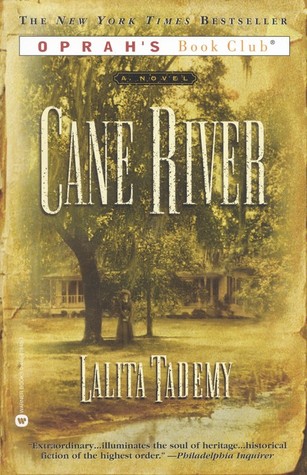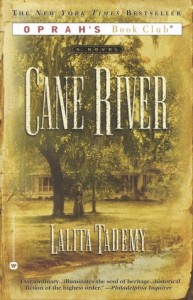It’s Halloween time, and that means sweet treats along with spooky tricks. When the harvest time rolls around, you may be wondering what to dole out that won’t leave trick-or-treaters buzzed on sugary junk food, or grinning like jack-o-lanterns later. Even the miniature-sized candy bars, as diminutive as they may be next to the full-sized ones from the store, pack a concerning amount of calories and sugar. Even worse, most don’t have a nutritional label on them, so you can’t keep track of just what you — or your kids — are consuming.
Thankfully, there are many alternatives out there that are as delicious as they are nutritious. While many adults fall into the trap of assuming that since Halloween is a night for kids to enjoy with wild abandon, encouraging overindulgence in unhealthy foods is A-OK. Nothing could be further from the truth! Instead, make it a special evening of food and fun with a few of these creative Halloween treats.
Spiced Pumpkin Seeds
Nothing beats the classic autumn activity of carving out a pumpkin for creative and fun decorations. Begin by picking out a large, round, ripe pumpkin from your local pumpkin patch or grocery store. Take it home and cut off the cap, then scoop out all the seeds, leaving only the hard shell. Let the little ones decorate or even carve their own pumpkins (using child-safe tools, of course!) and busy yourself by separating out the seeds from the stringy, goopy flesh from inside the gourd. Once all the seeds have been separated, rinse them thoroughly in a fine mesh sieve and allow to dry. Toss them in a large bowl with a generous dollop of olive oil and your favorite seasonings. These flavor styles can run the gamut of spicy to salty to sweet to whatever kind of seasonings your family enjoys. Some great combinations include:
- Mediterranean: lemon zest, oregano, cumin
- Spicy/Sweet: dried rosemary, brown sugar, cayenne, kosher salt
- Indian Curry: curry powder, chili flakes, turmeric, dried coconut
- Fiery Cajun: cayenne pepper, garlic powder, black pepper
- Italian: parmesan, dried basil, garlic powder
Once the raw seeds are seasoned, preheat the oven to 350°F and spread the seeds out in a single layer on a large baking pan. Roast for 15 minutes or until seeds are completely dry, then toss. Continue to bake and toss at 10-minute intervals until seeds are crisp and lightly browned. Remove from oven and allow to cool thoroughly before scooping into bowls and serving to a gleeful audience. Pumpkin seeds can be eaten shell and all, or cracked open and enjoyed au naturale. Try placing handfuls into clear bags and tying with a colorful orange and black bow to make a Halloween-themed goodie bag! You can even go ultra-sophisticated by pairing three complementary flavors, or shaking individual batches with orange, brown, and black food coloring to mix together for a multicolored mixed treat.
In addition to being a fun and crunchy addition to your Halloween basket, pumpkin seeds are also a healthy superfood. High in zinc, which promotes metabolic response and cell regeneration, they also contain healthy fats and proteins to keep you and your little ones energetic for a night of tricking and treating. Pumpkin seeds also contain significant levels of manganese and Vitamin E, which help keep your blood sugar levels regulated and your skin healthy and glowing.
Homemade Caramel-Pecan Apples
Who doesn’t love the classic autumn party game of bobbing for apples? After the fun is finished for the night, consider whipping up a batch of classic caramel apples for hungry partygoers to snack on. Simply melt sugar in a heavy-bottomed saucepan until copper-colored and sizzling, then stir in about half as much softened butter and whisk vigorously until butter is mostly incorporated. Remove from heat and pour in an equal amount of heavy cream, stirring briskly until mixture is smooth and shiny. Add in a pinch of kosher salt to bring out the flavors and set aside. Meanwhile, slice ripe fall apples such as Honeycrisps or Fujis into wedges and scatter on a plate, then drizzle caramel sauce in thin streams over them. Allow to cool for a moment and serve.
While nobody will argue that caramel is exactly health food, this homemade version presents significant benefits over the neon-red pre-prepared apples that many trick-or-treaters are used to. It is completely free of the harmful dyes found in commercial versions, as well as high-fructose corn syrup that can cause blood sugar spikes. Additionally, the smaller serving size of wedges with a drizzle of sauce as opposed to a whole apple dripping with sugary coating will promote more mindful eating. Finally, apples themselves are nutritional powerhouses. High in fiber and Vitamin C, just one apple counts as a whole serving of fruit for the day!
One fun way to crunk up the fanciness of these caramel-drizzled apples is to serve them with a scattering of toasted pecans. Get your hands on the best nuts possible, such as Cane River pecans, and toss them in a pan with a little melted butter. Toast over a low heat until nuts are crisp and lightly browned. Add a little brown sugar for a sweet treat, or make them wickedly spicy with a pinch of cayenne. The healthy oils and fats within the nuts, as well as their high levels of protein, will help partygoers stay wide awake to enjoy the thrills of the night without any of the drowsiness or headaches that can come with a candy-induced blood sugar spike.
Dried Cinnamon Apples
Looking for another way to use the fall’s abundance of apples without the hassle of making caramel? Homemade dried apple rings are the answer. Just remove the cores from as many of these sweet, tart fruits as you have lying around. Cut them into thin rounds and crush with a neutral oil such as canola or grapeseed. Sprinkle lightly with cinnamon, nutmeg, and allspice, and place into a 250°F oven. Allow to roast until apples are dry and browning in spots, about three hours, then remove and serve warm. As a bonus, your home will smell like the flavors of the fall!
In addition to being heart-healthy and low-sugar, homemade apple rings are a great project to take on with a gang of little ones during the fall. Older children can take on coring the fruits, and even slice the rings with some supervision. Allow younger kids to handle brushing the rings with oil and sprinkling the spices, creating their favorite mix of flavors. Spend the apples’ cooking time playing party games such as “pin the nose on the witch,” or telling your favorite scary stories around the fire.
Like pumpkin seeds, these dried cinnamon apples are excellent stuffed into goodie bags and passed out at a party. Once dried they will keep for several days, making them an excellent choice for healthy snacks to keep around the house. To take the flavors up a notch, dice them up and mix into your favorite gingerbread recipe for a stunning combination of soft, chewy cookie and crisp, spiced apple.
Soft Maple Oat Pretzels with Pumpkin Dip
Who doesn’t love a soft, chewy pretzel studded with rock salt or sparkling sugar? These low-fat treats require some prep work, but are sure to stun when placed on the Halloween buffet table. Add one packet of dry yeast to 1 1/2 cups rolled oats and 3 cups whole-wheat flour and stir well to combine. Add a pinch of salt, 3/4 cups milk, 1/4 cup of maple syrup, and two tablespoons of neutral oil such as canola or safflower. Stir well and place in a warm, dry place for at least three hours or until puffy and risen. Turn onto a floured work surface and knead for about five minutes or until dough is smooth and elastic. Cover with a tea towel and allow to rest for fifteen minutes. While dough is proofing, combine another 1/2 cup oats with butter in a medium skillet and toast until crisp and golden-brown.
When dough has proofed, divide into 24 equal pieces. Allow kids to help roll each piece out into a long, skinny rope and twist into a pretzel shape. Brush with more maple syrup, sprinkle on toasted oats, and bake at 350°F for 15 to 20 minutes or until deeply golden-brown. Remove and allow to cool.
While the pretzels are baking, make a delicious and nutritious pumpkin dip to serve alongside it. Simply allow one 8-oz package of cream cheese to soften, then whip in a food processor until smooth and fluffy. Add in a can of pumpkin puree, one to two tablespoons of brown sugar, and cinnamon, nutmeg and allspice to taste. Dredge warm pretzels through the dip and enjoy a low-calorie taste of the fall season.
While it may be tempting to just let kids (or even yourself) go wild in a frenzy of mini candy bars and processed junk food during this time of year, Halloween doesn’t have to be a bonanza of sugar. Preserve your teeth and your energy levels by whipping up one or more of these delicious snacks. As a bonus, cooking many of these dishes is a great party activity with kids in its own right! With a little know-how in the kitchen, you can teach your young ones the joys of making their own wholesome food, and enjoy a guilt-free sweet treat at the end. Happy Halloween!


